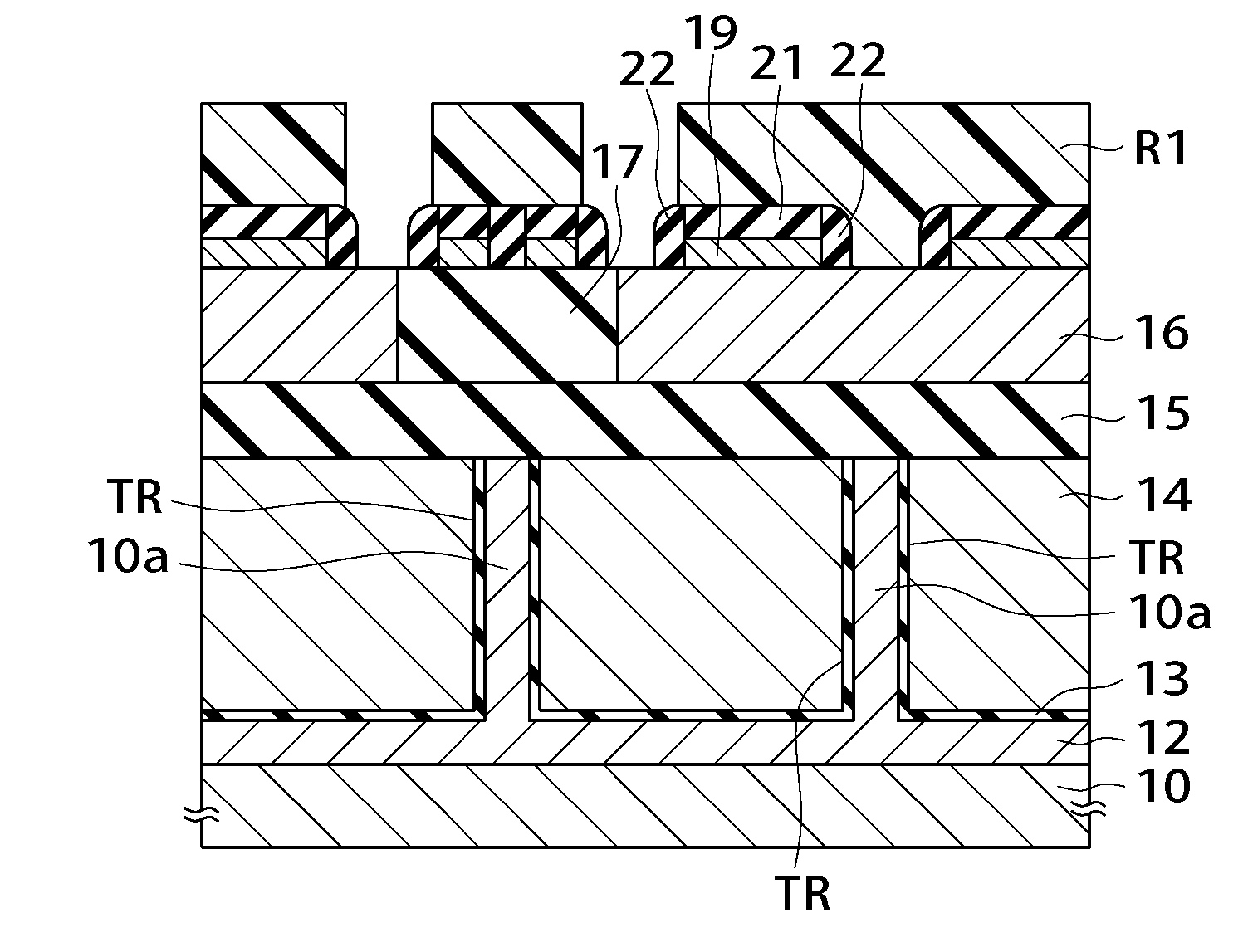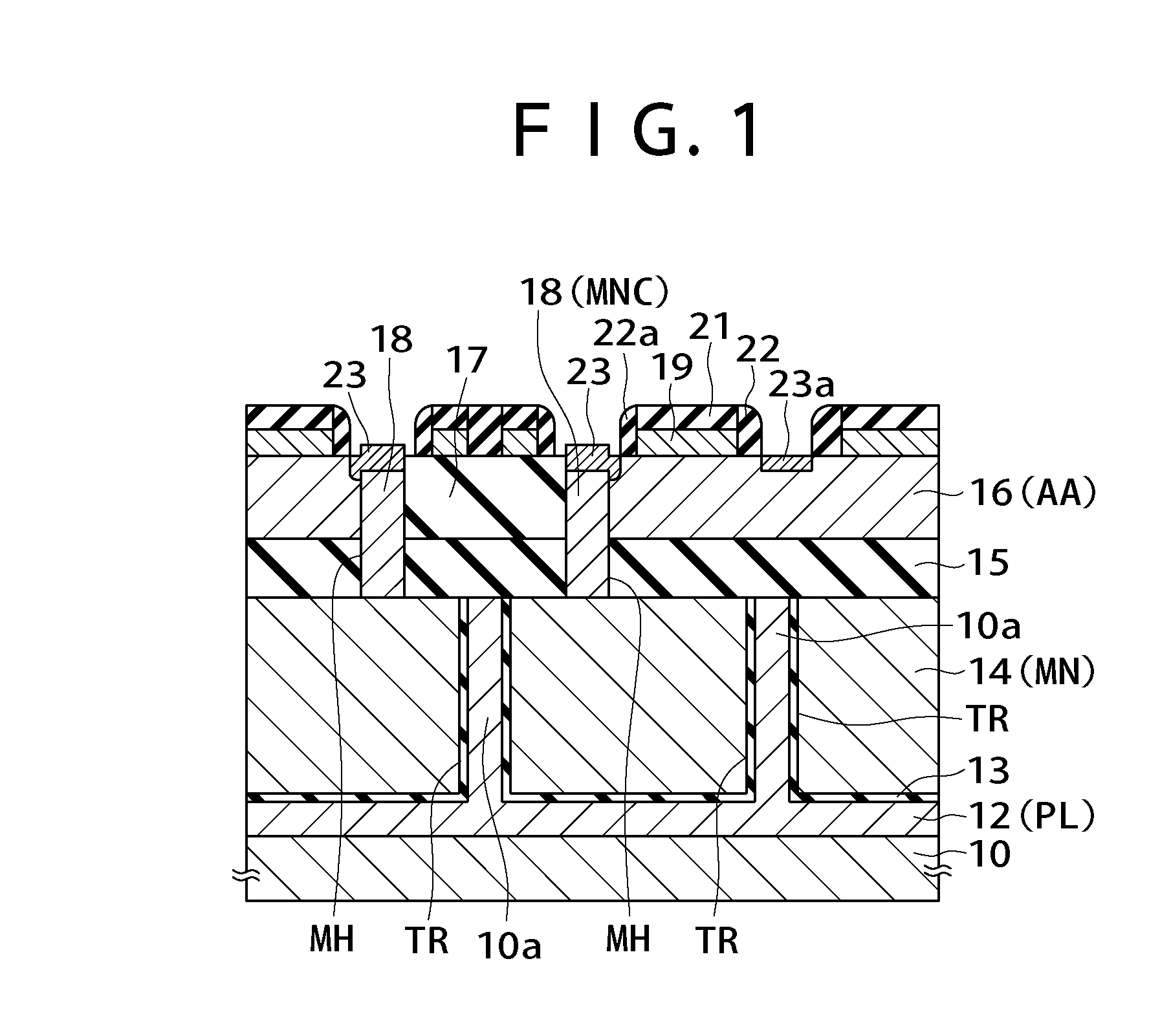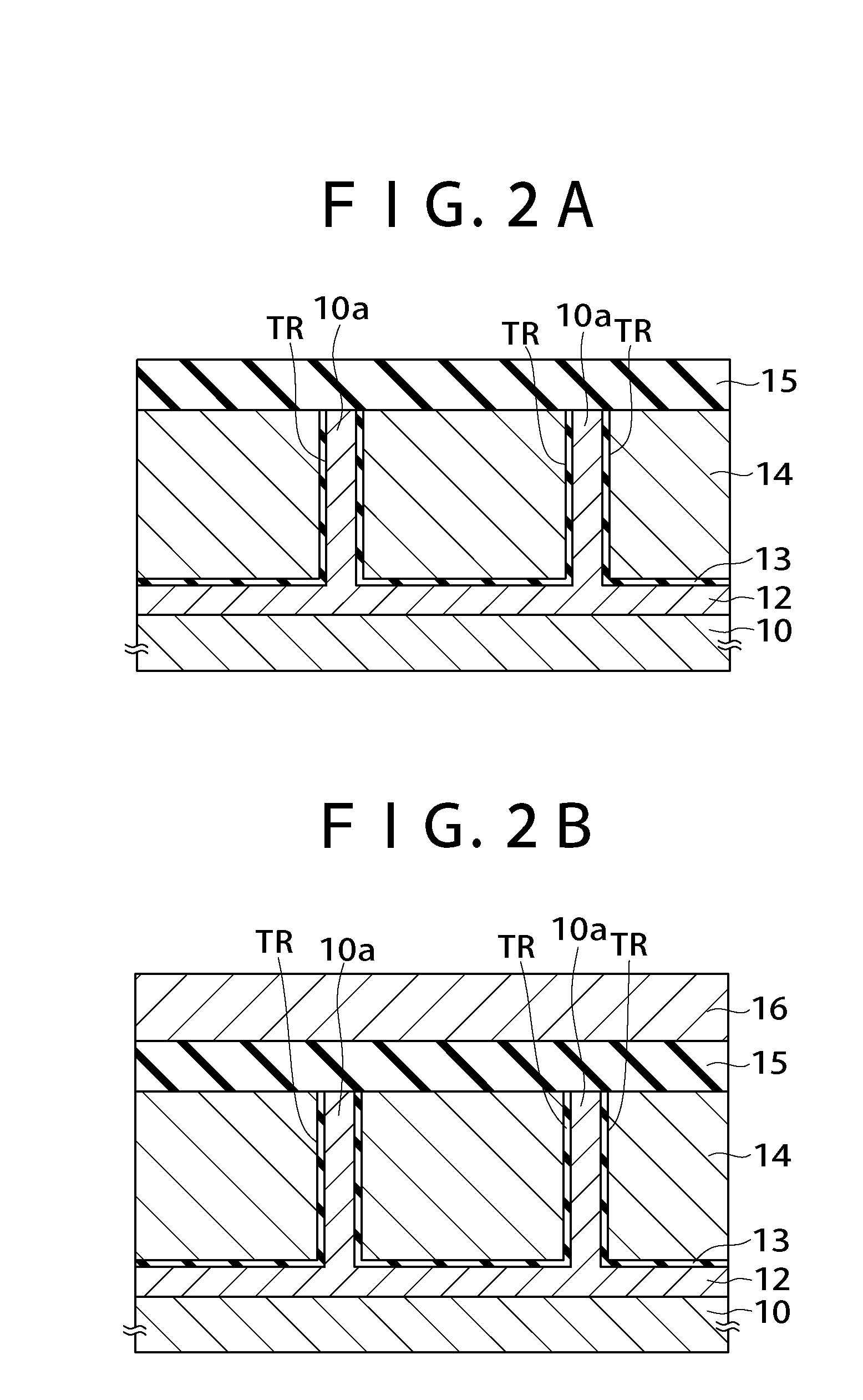Semiconductor memory device, semiconductor device, and method for production thereof
a semiconductor and memory device technology, applied in the direction of semiconductor devices, electrical devices, transistors, etc., can solve the problems of difficult to reduce the area of cell arrays, and achieve the effect of reducing size, reducing area, and reducing area
- Summary
- Abstract
- Description
- Claims
- Application Information
AI Technical Summary
Benefits of technology
Problems solved by technology
Method used
Image
Examples
first embodiment
[0079]FIG. 1 is a sectional view of the memory cell of the DRAM pertaining to the present invention.
[0080] There is shown a semiconductor substrate 10, in which is a trench TR separated by a trench wall 10a. There is shown a first n-type semiconductor layer 12 with a prescribed depth from the surface of the inner wall of the trench TR. It functions as a plate electrode PL of the memory capacitor.
[0081] There is shown a capacitor insulating film 13 which covers the surface of the inner wall of the trench TR. There is shown a second n-type semiconductor layer 14 of polysilicon which fills the inside of the capacitor insulating film 13. It functions as the memory node electrode MN of the memory capacitor.
[0082] As mentioned above, the memory capacitor is composed of the first n-type semiconductor layer 12 (plate electrode PL), the capacitor insulating film 13, and the second n-type semiconductor layer 14 (memory node electrode MN).
[0083] There is shown an interlayer insulating film...
second embodiment
[0123]FIG. 8 is a sectional view of the memory cell of the DRAM pertaining to the present invention.
[0124] This DRAM is substantially identical with that in the first embodiment, except that the offset insulating film on the gate electrode 19 does not exist, the side wall insulating film 24 (with its surface retreated) exists on both sides of the gate electrode 19 which are close to the memory node contact and the bit contact, and the metal silicide layer 19a exists also on the surface of the gate electrode 19.
[0125] The DRAM according to this embodiment is characterized in that the source-drain (close to the memory node contact plug MNC) of the MOSFET formed in the third n-type semiconductor layer 16 is connected to the memory node contact plug MNC by the metallized region (or the metal silicide layer 23) in place of an impurity diffused from the memory node contact plug MNC. This structure obviates the necessity for heat treatment for impurity diffusion from the memory node cont...
third embodiment
[0139]FIG. 11 is a sectional view showing the important parts of the memory cell of the DRAM pertaining to this embodiment.
[0140] This DRAM is substantially identical with that in the first embodiment, except that the cylindrical insulating film 18b is formed on the surface of the side wall of the memory node contact hole MH and the memory node contact plug 18 is formed inside the cylindrical insulating film 18b.
[0141] The cylindrical insulating film 18b has a thickness L1 which is about 1 nm. The cylindrical insulating film 18b completely prevents impurities from diffusing from the fourth semiconductor layer 18 (memory node contact plug MNC) to the third n-type semiconductor layer 16. Thus no distance is necessary for alignment of lithography to make the contact hole and lithography to form the gate electrode. The result is a cell array with a reduced area.
[0142] On the channel forming region of the third n-type semiconductor region 16 are the gate electrode 19 and the offset in...
PUM
 Login to View More
Login to View More Abstract
Description
Claims
Application Information
 Login to View More
Login to View More - R&D
- Intellectual Property
- Life Sciences
- Materials
- Tech Scout
- Unparalleled Data Quality
- Higher Quality Content
- 60% Fewer Hallucinations
Browse by: Latest US Patents, China's latest patents, Technical Efficacy Thesaurus, Application Domain, Technology Topic, Popular Technical Reports.
© 2025 PatSnap. All rights reserved.Legal|Privacy policy|Modern Slavery Act Transparency Statement|Sitemap|About US| Contact US: help@patsnap.com



